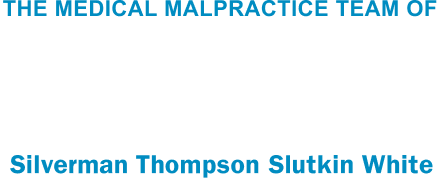Laparoscopic Cholecystectomies: Common Procedure, Tragic Consequences
Among the most common surgeries performed in the United States each year is the laporoscopic cholecystectomy (removal of the gallbladder). Indications for a cholecystectomy include inflammation of the gall bladder (cholecystitis), biliary colic, pancreatitis. Laparoscopic cholecystectomy has replaced the “open” cholecystectomy as the first-choice treatment for gallstones and inflammation of the gall bladder. In a laparoscopic procedure, the surgeon usually makes 3-4 small incisions in the abdomen to allow the insertion of operating ports through which surgical instruments and a video camera can be placed. The surgeon watches the monitor and performs the operation by manipulating the surgical instruments through the ports.
Typically, a surgeon begins the procedure by inflating the abdomen with carbon dioxide to create a working space. The gallbladder is identified, grasped and retracted. The gallbladder neck is then retracted to open up what is known as the Triangle of Calot or Triangle of Safety. The Triangle of Calot is the area bordered by the cystic duct, cystic artery and common hepatic duct. The cystic duct and cystic artery are identified and clips are placed on the ends of the cystic duct and cystic artery where they connect with the gallbladder and where those structures connect to the common bile duct. The surgeon then cuts the cystic duct and cystic artery between those clips, dissects/shells out the gallbladder from the liver’s edge and removes the gallbladder. Typically, the procedure takes an hour.
While the procedure/technique seems straightforward, it is fraught with great peril to the patient if the surgeon encounters complications. The most common complication occurs when the surgeon, because he/she cannot clearly identify the structures he/she is seeing, cuts or injuries the wrong structure; i.e., he cuts the common bile duct or common hepatic duct, mistaking it for the cystic duct. Injuries can also occur to the patient’s biliary tree (duct system) if the surgeon encounters bleeding while attempting to dissect out the gallbladder. This blood often obscures the surgical field and results in injury to unintended adjacent structures. For example, in some instances surgeons negligently burn the common bile duct or common hepatic duct in their efforts to control the bleeding with electrocautery. This should never happen. When complications such as the inability to properly identify the structures that should be clipped/cut prior to so doing, and/or encountering bleeding that obscures the surgical field, surgeons should either convert the procedure to an open procedure to obtain a better view of the surgical field or perform other procedures (such as a cholangiogram (injecting dye into the biliary tree to see which structures are which)) to help them avoid injuring other unintended structures.
When a portion of a patient’s biliary tree is injured during a laparoscopic procedure, the injuries range from significant to catastrophic. Most patients will require additional procedures following the surgery to go back in and repair the injury to the biliary tree/duct. Many patients will become seriously ill/septic as bile is permitted to escape into the abdomen and become infected. Still other patients will suffer more catastrophic injuries such as liver injuries or require a liver transplant. These patients are all at considerable risk of developing strictures of their biliary tree in the future and/or developing frequent bouts of cholangitis. The potential future medical costs can range into the millions.
At STSW, our lawyers routinely handle these kinds of medical malpractice cases in the Baltimore and Washington D.C. areas. If you or a loved one have been injured following a laparoscopic cholecystectomy, call our team for a free consultation.






